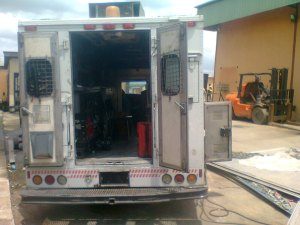Modern automobile vehicles these days, have been incorporated with several engine control sensors, such as oxygen sensors, which a car’s engine control computer, uses, for balancing or maintaining stoichiometric air/fuel ratios during it’s combustion processes.
Oxygen sensors can be categorised into pre (upstream) and post(downstream) sensors.
- Pre-oxygen sensors are the sensors located before the catalytic converter of a vehiy. They are usually on the exhaust manifold, on the top cylinder(s). The major function of tis sensor is to measure the oxygen content in the exhaust system, inorder to determine fuel injection and timing control. Any problem with a pre oxygen sensor, would usually cause engine performance problems, and affect engine timing control.
- Post oxygen sensors are usually located after the engine itself, and placed on the catalytic converter, normally underneath the car. This particular sensor, only looks at the efficient performance of the catalytic converter, and reports the true efficiency of same, to the ECU. In some vehicles, these sensors are comprised of heater circuits, which helps to heat up the sensor element, and speed up feedbacks to the ECU during engine startups.
A failure of any of these sensors, especially the Pre-oxygen ones, would distort engine performance,and cause other problems.
Here’s a case study of a client’s vehicle exhibiting this problem:
Some months ago, a client of our shop, brought his 2006 Toyota RAV4, to the shop with the following symptoms:
- Eratic engine misfires, without any trouble codes
- Visible black smoke (soot like) coming from the exhaust pipe, during engine idling, and when the gas pedal is stepped on
- Check engine light was lit on the instrument cluster
- Peperish exhaust fumes to the eyes, and unburnt fumes(incomplete combustion).
DIAGNOSTIC PROCEDURE:
Troubleshooting a problem like this one can be very fustrating sometimes, because fixers always assumed that in every oxygen sensor related problem, the sensor must be replaced without patiently studying the code(s). Don’t just throw money at parts, because a scanner showed an oxygen sensor related code.
CONFIRMATION OF PROBLEM, AND THE FIX.
- A code reader was used to retrieve two codes; P0335(crankshaft position sensor”A” circuit), and P0035 heater control circuit related.
- Inorder to track down on the actual code that was the culprit, the FFD(freeze frame data was studied, and oxygen sensor heater circuit was the only sticky one there. This tells me that the p0335 crankshaft position sensor A code was not the culprit, but was triggered by a bad O2S.
- We physically confirmed the complaints of the client, by visibly, observing the engine performance problems, and visible exhaust soot and fumes from the tailpipe.
- Checked the oxygen sensor wire circuits, for any signs of open or short circuits, by physically wiggling the harness connectors, and using a DC meters.
- Removed the pre oxygen sensor on the rear of the bank(firewall), tested the white wires(heater circuits) of the sensor, and realized the reading was not within spec. It showed OL on the meter, which means the heater circuit, had an open circuit fault, which the ECU got into limp mode, and threw those codes.
- Got a new replacement sensor, fixed it, immediately the smoke stopped coming, and the engine performance was restored.

RAV4 2gr bad upstream rear bank oxygen sensor 
RX300 Lexus upstream oxygen sensor
In some vehicles, there might not be heater control circuit. In such a situation, it is best to go by physical symptoms, and live data analysis.
Note: For a known good oxygen sensor, CURRENT should always be on the SAME LEVELS WITH EACH OTHER.
For instance, both sensors 1 and 2 on either banks should fluctuate within 0.01-1.00mA.
Pre oxygen or upstream sensors, are supposed to fluctuate more frequently than downstream ones.
None of the sensors are supposed to stay stagnant while others work.
Be careful not to buy fake oxygen sensors, because a lot of the ones advertised on the internet, are knockoffs, and won’t save the purposes intended.
Always ensure you get exactly your vehicle’s kind of sensor, by checking up the part numbers on them with the dealership.

Notice the differences on these two sensors. 
Huge difference in the number of perforations on the new and stock oxygen sensors.
Not all oxygen sensors are the same, either in terms of configurations, or internal circuit arrangements.









